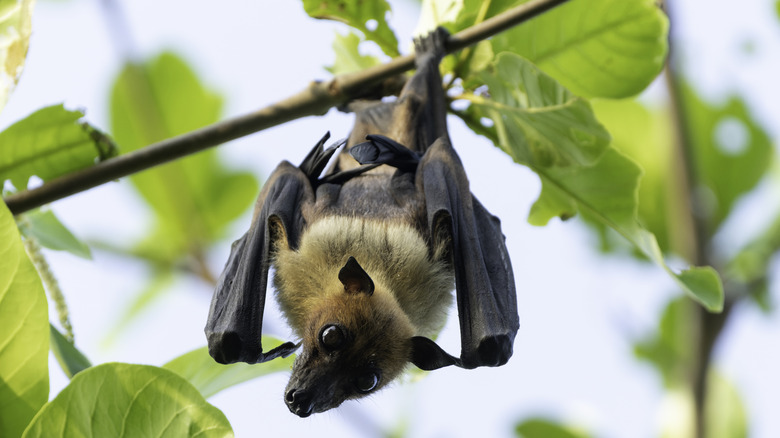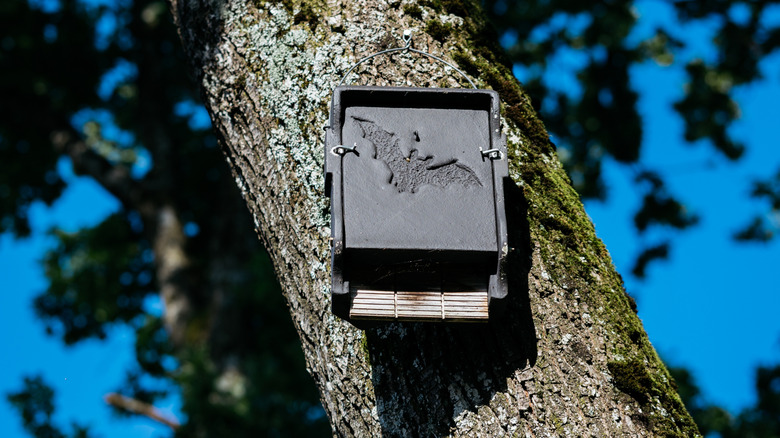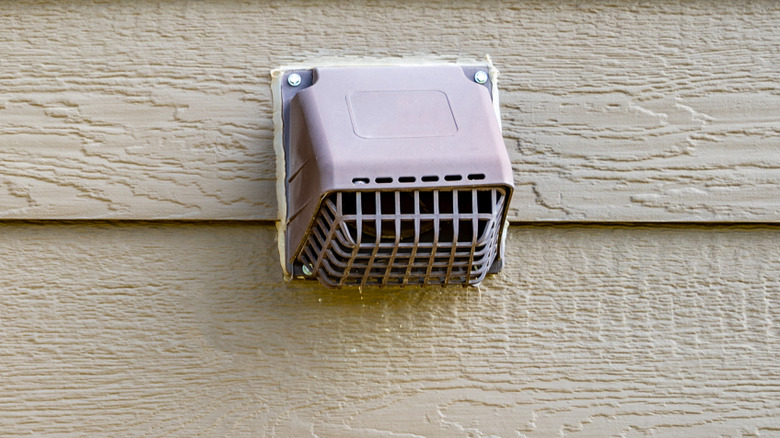What It Means When Bats Are In Your Yard (And How To Attract Them)
We may receive a commission on purchases made from links.
It's twilight and you notice something small and dark swooping through the air. You can tell from the way it moves that it's not a bird, which leaves one option: a bat. Bats are nocturnal creatures who are either loved, loathed, or feared, but what does it mean if you find them in your garden? Here's the good news: bats are a sure sign that you've created a healthy, thriving ecosystem in your yard.
Bats need water, food, and somewhere to hide when the sun comes up. These three elements are also essentials for a biodiverse ecosystem. When bats show up, rest easy that you're getting the balance right. Attracting bats to your garden is a simple matter of laying on the drinks, snacks, and bat-friendly accommodation.
Should you be worried about bats damaging your garden? The answer is a resounding no. Bats are pollinators. Though less widely acknowledged as such compared to pretty hummingbirds and buzzing bees, bats perform the same function, carrying pollen grains between flowers as they hunt bugs. They're also great at seed dispersal for fruit trees such as bananas, mangoes, and figs. To top it off, bats poop free fertilizer. Unlike doggy-do, which needs to be picked up and bagged, bat guano is an excellent source of nitrogen. Nitrogen is known as the leaf-maker, as it stimulates plant growth and improves leaf color. Veggie and fruit gardens need it, too, as it increases the amount of protein in each fruit. Bats are truly nature's helpers.
Attracting these mosquito-killing, pollinating powerhouses
There are some easy adaptions you can do to create an environment in your yard that bats approve of. Provide drinking water in the form of a pond, a water feature, or a natural water source in your yard. Garden water features often serve a double purpose. They not only serve clean drinking water for thirsty bats, but also provide a place for water insects such as midges or larvae to breed. Bats are insectivores who feast on such bugs, as well as mosquitoes, mayflies, wasps, gnats, and beetles. Along with a water source, planting insect-friendly night-blooming plants such as moonflowers or evening primroses provides extra food for bats.
When it comes to a roosting place, keeping mature trees with cavities or hollows on your property provides options for bats to nest in. Building a bat house is another great idea, and you can attract more bats to your bat house with these must-know tips. If you'd prefer not to DIY, invest in an Outer Trails Real Bark Finish Bat House or this delightfully quirky Vireesr Wooden Cast Bat House.
Minimizing light pollution is a vital key to making your yard bat-friendly. Install hoods onto your outdoor lights to direct the light downward. Swap out regular garden lights for low-intensity garden lights. Bats usually come out as the sun is going down, but outdoor lights that are too bright, or shine upward into their flight path, can delay feeding and disrupt their natural life rhythms.
Bat risks and how to enjoy them safely
While bats in the garden are great for pest control, bats deciding your home looks cozy and inviting can be a problem. Bats seek out a safe haven when they are ready to start a family, which sounds sweet, right? But they don't have great toilet habits and will leave bat droppings on the roof, in the attic, or throughout your home. Bat guano, along with bird droppings, breed a fungus which can cause histoplasmosis in the lungs when breathed in. This disease causes a lingering infection that can be hard to shake.
Rabies is often associated with bats, but it's estimated that less than 0.5% of bats carry the disease. However, as there's no way of telling whether the cute fellow flying laps in your living room is one of the 0.5%, it's best to avoid handling them as much as possible. Bats aren't aggressive by nature, but they may bite if they feel threatened. Rabies is spread only through saliva, not through their poop or just by being in the same room as you.
Finding the middle ground of having them in your garden and keeping them out of your home isn't as hard as it sounds. Seal vents with a ventilation grill, buy a Cleanrth Ultrasonic Bat Repelling System for attics, or discover how to use aluminum foil to repel bats from your home. With an ideal garden and a bat-safe home, you'll be able to enjoy the benefits of these fascinating creatures.


